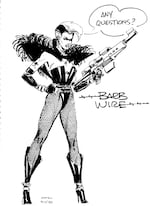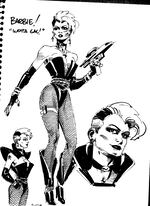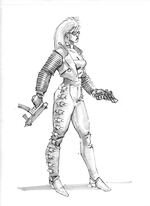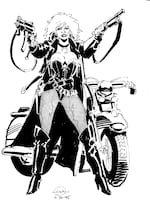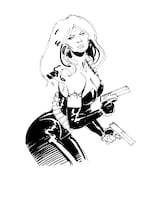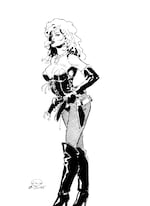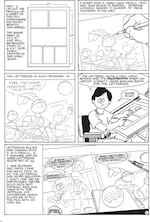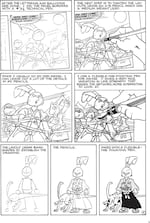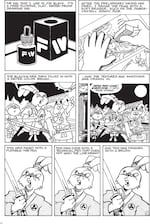Dark Horse Comics dropped some big news last month at New York City Comic Con.
The Milwaukie, Oregon, based publisher is launching a new line of comics that weaves together the past, present and future world of "Avatar," the highest grossing film of all time.
"For the past 27 years, Dark Horse has been associated with my films 'The Terminator,' 'Aliens' and 'The Abyss,'" said writer and director James Cameron in an announcement via video. "Now they're working directly with me and our team at Lightstorm in an unprecedented 10-year partnership."
[image:20151029_dhsin_jr_scarttpbpg121,left,300x390,56326fe8843efb00a51fb436]
The comic series will be just one more addition to the venerable catalog that spans nearly three decades.
Dark Horse's catalog features some of the most critically acclaimed comic series in the past few decades: "Hellboy," "Sin City" and "Usagi Yojimbo." The comic publisher's titles include some of the most revered movies in popular culture: "Star Wars," "Indiana Jones" and "The Thing." As well as other stories that spawned their own movies: "300," "The Mask" and "Barb Wire."
This month, Greetings From The Northwest focuses on publications in our region. Dark Horse Comics opened its vaults to show how the publisher's characters, covers and series have changed over its near 30 year history.
'Barb Wire'
"When I first dreamed up the character, long before the comics were ever done ... the idea was (a) space opera action/comedy," said "Barb Wire" creator Chris Warner. "The name sounded both action packed and tongue-in-cheek, so I thought of a bounty hunter in space who also fronts a metal band — very high-brow stuff."
That was until Dark Horse Comics owner Michael Richardson saw the initial sketch. He thought the character Barb Wire, with some changes, would make a good addition to Dark Horse's line of superhero comics.
Barb Wire morphed into a bar owner and part-time bounty hunter. Eventually Pamela Anderson played her in the 1996 movie. The comic relaunched last July.
"I think each version of the character is a bit of a reflection of those times and of the landscapes in which the character would operate," Warner said.
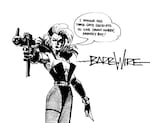
'Hellboy'
Creator Mike Mignola first drew "Hellboy" in 1991 — two years before it was officially published.

The first sketch of Hellboy in 1991. It’s the early inception of the character created two years before it first appeared in a comic.
Courtesy of Dark Horse Comics
For a 20-year retrospective on Mingola's work, he told i09 the story behind his initial drawing:
“I needed to do a drawing for an upcoming convention, they asked for me to draw something. And since at the time I wasn't known for any particular character, I just made up this clunky thing and as an afterthought wrote Hellboy on it.”
Since then the character shrunk down, donned a coat and has become a marquee name for for the publishing house.
'Sin City'
The graphics of 'Sin City' match the starkness of Frank Miller's noir narrative, which critics have called "gorgeous." His unique vision has since translated well into a hyper-stylized blockbuster movie franchise.
Comparing Miller's rough sketches with the finals reveals insight into his process of creating the iconic look.
'Usagi Yojimbo'
Stan Sakai has been drawing his celebrated series "Usagi Yojimbo" for three decades. His extensive research and command of craft has cultivated an awe-inspiring body of work.
"It's very unusual for anyone in the (United) States to create and continue a comic-book series that has lasted as long and stayed as vital as 'Usagi Yojimbo,'" said Chris Warner, who not only created "Barb Wire," but also serves as a senior editor at Dark Horse.
The series has also maintained a singular vision over all the years. Below are panels from his Ronin published in 1986 and Usagi Yojimbo 149, published in 2015.
1986
2015
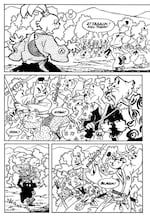
Courtesy of Dark Horse Comics
1986 vs. 2015
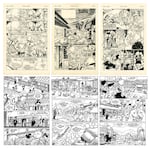
"What I find truly unique about Stan's work is that he works in a visual style that is more conducive to comedy, and yet the stories are incredibly dramatic," Warner said.
Curious to see how Sakai has been able to produce such quality content over the years? The prolific artist drew out a step-by-step process of what it takes to create his Usagi Yojimbo comic.
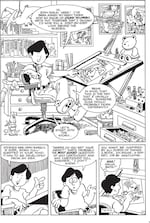
Courtesy of Dark Horse Comics


